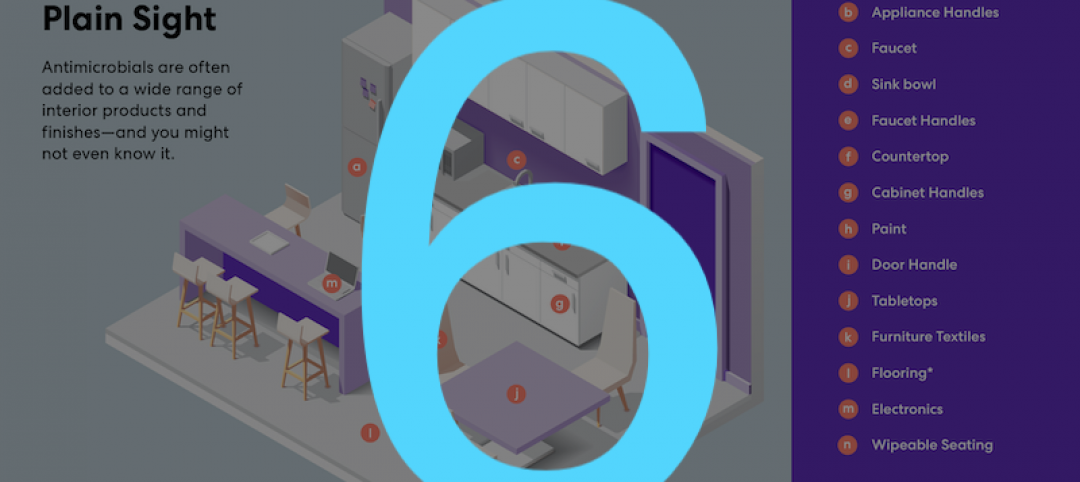The Q1 2018 USG Corporation + U.S. Chamber of Commerce Commercial Construction Index (Index), released today, reveals nearly two-thirds of contractors are highly confident that demand for commercial construction will increase over the next year, however, continued concerns around labor shortages have put even greater pressure on the industry. To increase jobsite efficiency and improve labor productivity, increasingly more builders are turning to alternative construction solutions, like prefabrication and modularization.
The Q1 Index indicates contractors turn to innovations such as prefabricated and modular building materials to create more efficient jobsites (89%), increase labor productivity (85%), drive cost savings (58%), and provide a competitive advantage in the marketplace (51%). In fact, 50% of contractors report their companies already use prefabricated and modular components and the number was even higher among general contractors (72%). Nearly two-thirds (63%) of contractors report at least moderate demand for these building materials.
"Access to skilled labor is a continued concern, which has led contractors to increasingly seek solutions that help offset jobsite challenges,” said Jennifer Scanlon, President and Chief Executive Officer of USG Corporation. “There is significant opportunity to introduce innovations that confront jobsite efficiency and strengthen the industry – such as solutions that enable prefabricated and modular building components.”
Contractors in the Northeast (69%) reported the most frequent usage of prefabricated and modular components, compared to the South where only 24% indicate their companies are using these materials. Firms in the Northeast also expect to hire fewer workers—38% of contractors in the region expect to employ more staff in the next six months, compared with 57% in the South, 59% in the West, and 68% in the Midwest. Across all regions, concern over the cost of hiring skilled labor has remained consistent over the past year—nearly two-thirds (64%) of contractors expect these costs to increase in the next six months.
Despite labor concerns, contractor sentiment remained steady for the first quarter, as a result of strong revenue expectations and higher profit margins, with a composite score of 74.
“As we work to continually build our neighborhoods, towns, regions, and roads, as well as the workforce that supports our growth, innovation becomes a key component in advancing our country into the 21st century,” said Thomas J. Donohue, President and CEO of the U.S. Chamber. “We must invest in a skilled, competitive, motivated workforce and embrace new innovations to ensure we are able to compete on a global scale.”
The Index looks at the results of three leading indicators to gauge confidence in the commercial construction industry – backlog levels, new business opportunities and revenue forecasts – generating a composite index on a scale of 0 to 100 that serves as an indicator of health for the contractor segment on a quarterly basis. The Q1 2018 composite score was 74, holding steady from Q4 2017.
The Q1 2018 results from the three key drivers were:
- Backlog: On average, contractors currently hold 8.9 months of backlog, relatively close to the average ideal amount of 12.2 months, continuing the stability of the market, although there is room for growth. Down two points from Q4 2017, this represents 73% of ideal backlog levels.
- New Business: Nearly all (98%) contractors report high or moderate confidence in the demand for commercial construction. Year-over-year, the number of contractors who have high confidence in demand over the next 12 months jumped 11 percentage points (from 51% in Q1 2017 to 62% in Q1 2018).
- Revenues: Over half (54%) of contractors expect to see revenue gains in the next year. This percentage jumped seven points from last quarter (47% in Q4 2017).
The research was developed with Dodge Data & Analytics (DD&A), the leading provider of insights and data for the construction industry, by surveying commercial and institutional contractors.
Related Stories
Market Data | Jun 11, 2020
5 must reads for the AEC industry today: June 11, 2020
Istanbul opens largest base-isolated hospital in the world and AIA issues tools for reducing risk of COVID-19 transmission in buildings.
Market Data | Jun 10, 2020
6 must reads for the AEC industry today: June 10, 2020
Singapore's newest residential district and CannonDesign unveils COVID Shield.
Market Data | Jun 9, 2020
ABC’s Construction Backlog Indicator inches higher in May; Contractor confidence continues to rebound
Nonresidential construction backlog is down 0.8 months compared to May 2019 and declined year over year in every industry.
Market Data | Jun 9, 2020
6 must reads for the AEC industry today: June 9, 2020
OSHA safety inspections fall 84% and the office isn't dead.
Market Data | Jun 8, 2020
Construction jobs rise by 464,000 jobs but remain 596,000 below recent peak
Gains in may reflect temporary support from paycheck protection program loans and easing of construction restrictions, but hobbled economy and tight state and local budgets risk future job losses.
Market Data | Jun 5, 2020
7 must reads for the AEC industry today: June 5, 2020
The world's first carbon-fiber reinforced concrete building and what will college be like in the fall?
Market Data | Jun 4, 2020
7 must reads for the AEC industry today: June 4, 2020
Construction unemployment declines in 326 of 358 metro areas and is the show over for AMC Theatres?
Market Data | Jun 3, 2020
Construction employment declines in 326 out of 358 metro areas in April
Association says new transportation proposal could help restore jobs.
Market Data | Jun 3, 2020
6 must reads for the AEC industry today: June 3, 2020
5 ways to improve cleanliness of public restrooms and office owners are in no hurry for tenants to return.
Market Data | Jun 2, 2020
Architects, health experts release strategies, tools for safely reopening buildings
AIA issues three new and enhanced tools for reducing risk of COVID-19 transmission in buildings.

















